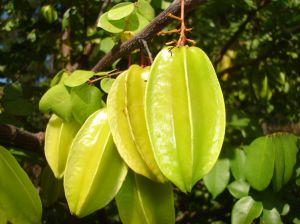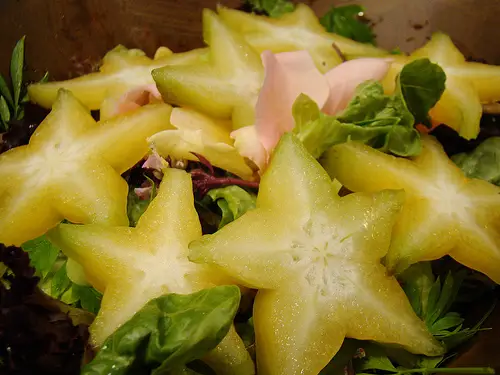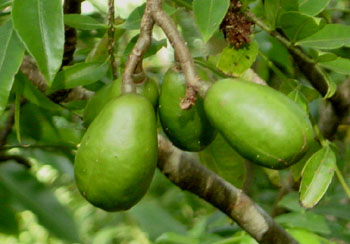Carambola
The carambola, also known as the starfruit, is the fruit of the Averrhoa carambola tree. This tree species is native to the Philippines, Indonesia, India, and Sri Lanka. In the Philippines, they are called either ‘saranate’ or ‘balimbing’ depending on how sour it is. This tree is also popular throughout southeast Asia, the South Pacific, and some areas of East Asia. It is also grown throughout many tropical nations, such as Peru, Colombia, Brazil, Guyana, Trinidad, Ecuador, and the Dominican Republic. It is also grown in the USA in southern Florida and Hawaii.
The carambola is a tropical and sub-tropical fruit. In India, this tree is called ‘kamrak’ and is grown at 4,000 feet above ground level. This tree prefers to be fully exposed to the sun, however it does need enough humidity and at least 70 inches of rainfall a year or more. It does not matter what kind of soil you put it in, as long as there is good drainage.
Carambola trees are planted at least 6.1 metres away from each other. It is fertilised three times a year. This tree grows quite fast, and produces edible fruits usually at around 4 or 5 years old. However, it can produce edible fruits even before that. In ideal conditions, the carambola can produce between 91 to 180 kilograms worth of fruit a year. However, if there is a large amount of rain during the spring time, this reduces the amount of fruit produced by the tree. The fruit is usually cultivated during June to August.
This tree has been grown in parts of Asia for hundreds of years. It is thought to have originally come from the Moluccas and Sri Lanka. However, Malaysia is the current global leader in starfruit production by volume, and their starfruits are shipped all over Asia and Europe.
Carambolas are related to the bilimbi. Its fruit is famous for looking like a 5 pointed star at its cross-section. The major pests of starfruits are fruit flies, birds, and ants. The crops are also susceptible to the frost, especially those grown in the USA. In the USA, there are some concens on pests and pathogens. As a result, whole starfruits cannot be imported to the USA from Malaysia under current FDA/USDA regulations. This is why starfruits are grown in Florida, Hawaii, and Puerto Rico to feed this market.
On the upside, starfruits do have excellent antimicrobial properties. Extracts of starfruit have shown antimicrobial activity against staph aureus, Salmonella typhi, E Coli, and bacillus cereus. It also is rich in vitamin C, primary and secondary antioxidants, and is low in acid, sodium, and sugar.
Like most fruits, you should eat starfruits when they are ripe. You can tell that they are ripe when they are yellow and have a light green shade. It will also feel firm, and have brown ridges at the 5 edges. An overripe fruit will be yellow with brown spots. This fruit tastes like a sweet and juicy apple.





Star fruit bad for dogs?
I’d check with the Vet ;-)